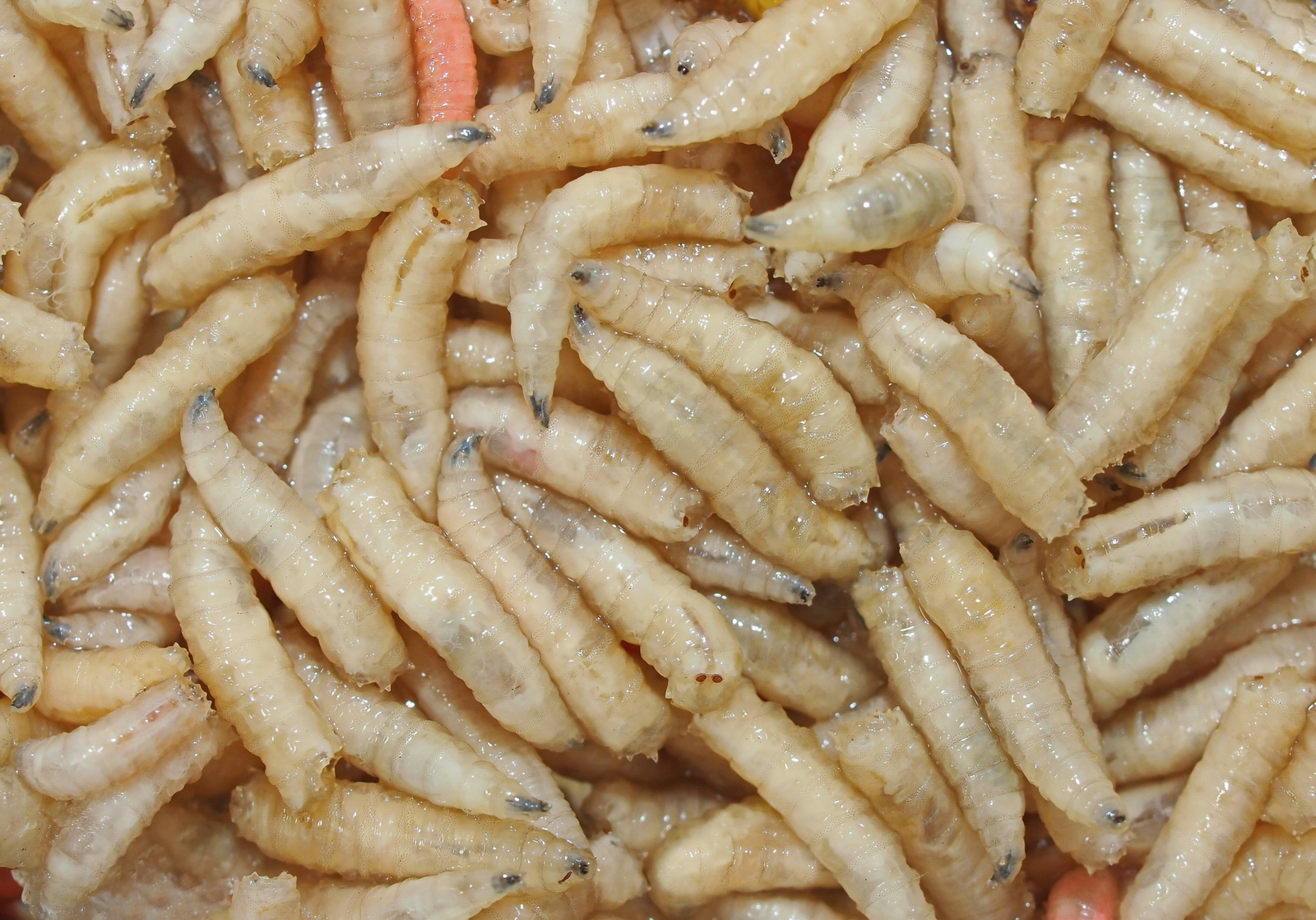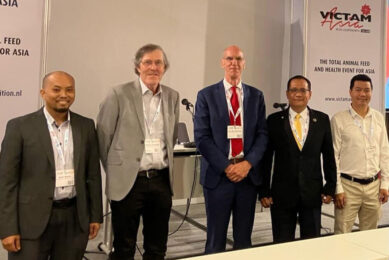The story of the fly

An animal excretes its waste on a field or dies in the bush and nature would recycle the waste nutrients using insects. A fly would lay its eggs on the waste nutrient source, the eggs would hatch into larvae and birds and fish would eat many of those larvae or flies – recycling the nutrients as well as cleaning up bio-hazard.
By Jason J. Drew
Our global food system is falling to pieces and heading for disaster yet, we have solutions all around us. We take for granted the fact that we should recycle our glass, newspapers, tin and more recently plastic and water. Businesses and services have sprung up to enable us to achieve this. But this is only the tip of the iceberg. Creating and discarding nutrients in the form of sewage, manure and abattoir blood has a far greater environmental impact. When we start to recycle these we will be truly on the path to some sustainability for our planet. As the old Yorkshire saying goes – where there is muck there is money! We live in a world where one billion of us are overweight or obese and one billion of us are hungry or starving. Many of the over fed are also undernourished due to the poor quality of food – literally stuffed and starved. In the 1950s the WHO picked up on an old proverb, and suggested we eat an apple a day – as it contained enough micro-nutrients to keep us healthy. If they ran the same campaign today it would be a less catchy 2.3 apples a day to have the same micronutrient effect.
Display until
We have EU regulations and standards for the humble carrot that are longer than the Bible, whilst perfectly good food is thrown away by farmers all over the world as it does not make some often arbitrary grade or another. Supermarkets follow madly inappropriate ‘display until’ and ‘use by’ dates which results in discarding yet more food in our food scarce world.
At the other extreme and in the absence of regulations, we have Chinese entrepreneurs adding melamine to their baby milk, making imitation rice out of recycled plastic bags and flour and others contaminating vinegar with anti-freeze – killing poor unsuspecting consumers. In a recent crackdown, Chinese authorities arrested 2,000 people and closed 4,000 businesses for tampering with foods in a host of unbelievable ways.
In the West we subsidise our farmers and fishermen causing devastation in developing countries. The EU spent hundreds of millions of euros buying fishing rights off the coast of Africa for our oversized fleets. Our industrial trawlers promptly plundered those seas. The local subsistence fishermen were left with nothing to catch – and we are then surprised when they pack their bags and migrate to Europe.
We are busy destroying our seas but we don’t have to. We have already destroyed the greatest natural wonder of the sea world – the grand banks. They have banned fishing in the sea of Galilee because there are no fish left. When will we stop this madness and do the only thing we can do which is develop our marine protected areas.
Sustainability
Where areas of our seas have been declared off limits to all fishing, stocks recover, mature fish breed and the young when overcrowded swim out to open seas where they fill the fishermen’s nets sustainably. But with our ever growing population not even this will be enough and we need new solutions to feed the world. The markets are clearly giving us a message, when a single mature tuna sold for US $1.8 million in Tokyo earlier this year – more than double last year’s record of US $730,000. It is the market telling us they are rarer that Rhino horns which sell (illegally) for around US $440,000 each. Nearly one third of the fish we take from our seas – some 50 million tonnes a year is used in our industrial agricultural and pet food industries. Whilst it is true that huge strides have been made in the feed conversion ratios and that farmed salmon are more efficient at converting feed into protein than say poultry or cattle, they still require more fish in than they get out. You are still better off eating the last fish in the sea than these farmed species. Yet at the same time as we pillage our seas, we dispose of hundreds of millions of tonnes of nutrient-rich waste. This is where the fly and a new industry of nutrient recycling – led by South Africa’s AgriProtein comes in!
Our manure
It is not just our human food waste – from supermarkets and food processing businesses – discarding unsightly but perfectly good fruits or out of date but edible foods. It goes much further – it takes as much land, diesel, water and our precious seas to make the bits of a chicken that we eat as the bits we throw away. This waste is full of valuable nutrients. Our manure – both animal and human – is also a key source of valuable nutrients. Most animals only take in a small percentage of the nutrients that pass through them – in nature this is recycled. An animal excretes its waste on the field or dies in a bush and nature would recycle the waste nutrients using insects. A fly would lay its eggs on the waste nutrient source, the eggs would hatch into larvae and birds and fish would eat many of those larvae or flies – recycling the nutrients – as well as cleaning up the bio-hazard. It is a case of horses for courses or rather flies for waste. Each species of fly and its larvae are naturally adapted to different types of waste.
Research to industrialise
Following food trails from Saudi Arabia to South Africa I ended up at the back of a slaughterhouse and saw a lake of blood surrounded by flies. As an avid fisherman in my youth. It was then I realised that this natural process could form the heart of a new business. My brother and I decided to fund the research to industrialise the process of fly farming. AgriProtein now takes waste nutrients from slaughterhouses – blood and guts – and feeds this to the eggs laid by our fly breeding stock. These eggs hatch into larvae and grow at an extraordinary rate once you take away the environmental factors that stop this happening in nature. Like birds and fish eating them! Larvae are a natural food source for fish and chickens – ask anybody who fishes!
One kilo of fly eggs turns into 380 kg of larvae in 72 hours. Larvae are what free range chickens in fields and fish in streams eat as part of their natural diet. This natural source of protein has been replaced in our industrial farming operations with the more readily available fishmeal. The chemical composition of fishmeal is almost exactly the same as that of fly larvae – which is why it was chosen as a substitute when we began to industrialise the food chain.
Copying nature
So we have copied nature and led the process of making protein from waste nutrients profitable, sustainably and on a large scale. We are already in production and we believe that we can produce Magmeal at scale for around US $900 per tonne which compares favourably with fishmeal – which is currently around US $1,350 per tonne, and likely to rise unless the oceans can be better managed. The world urgently needs new and sustainable sources of protein. Fly larvae fed on existing waste nutrient sources is one of these. Perhaps the adage is true “where there is muck there is money”– and sustainability!
Join 26,000+ subscribers
Subscribe to our newsletter to stay updated about all the need-to-know content in the feed sector, three times a week. Beheer
Beheer









 WP Admin
WP Admin  Bewerk bericht
Bewerk bericht